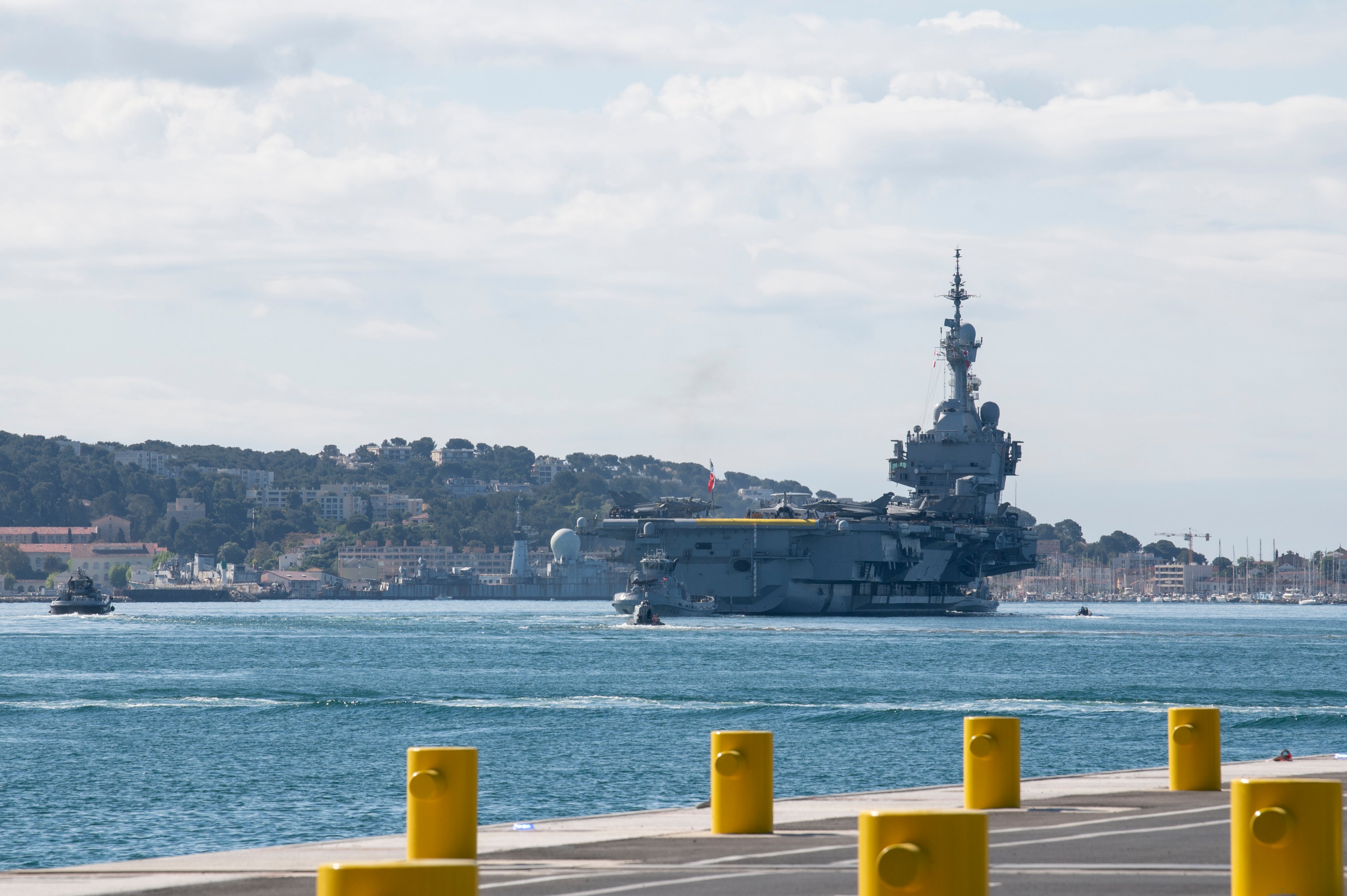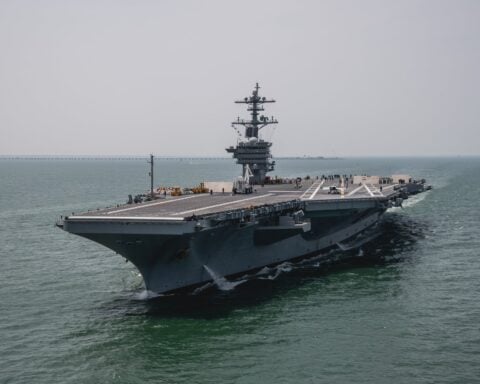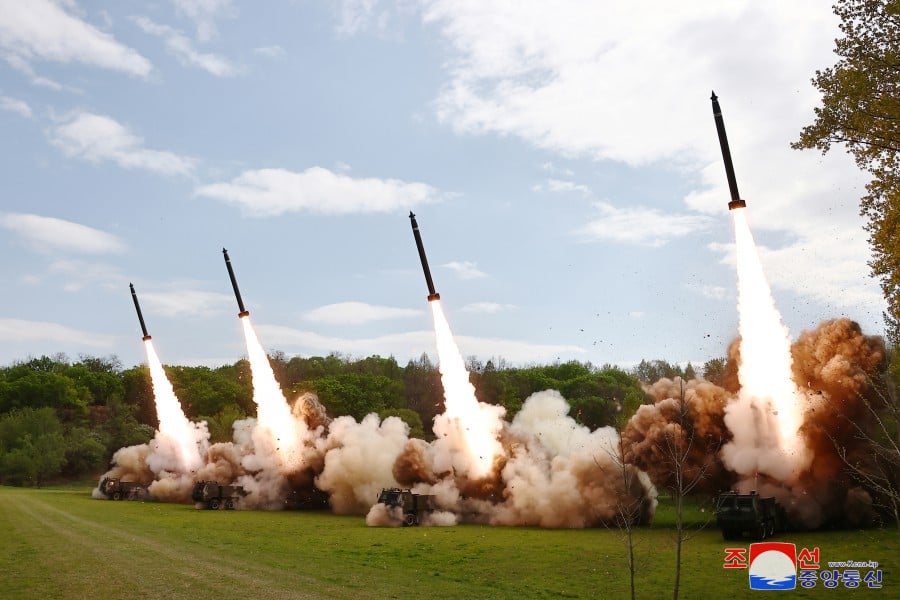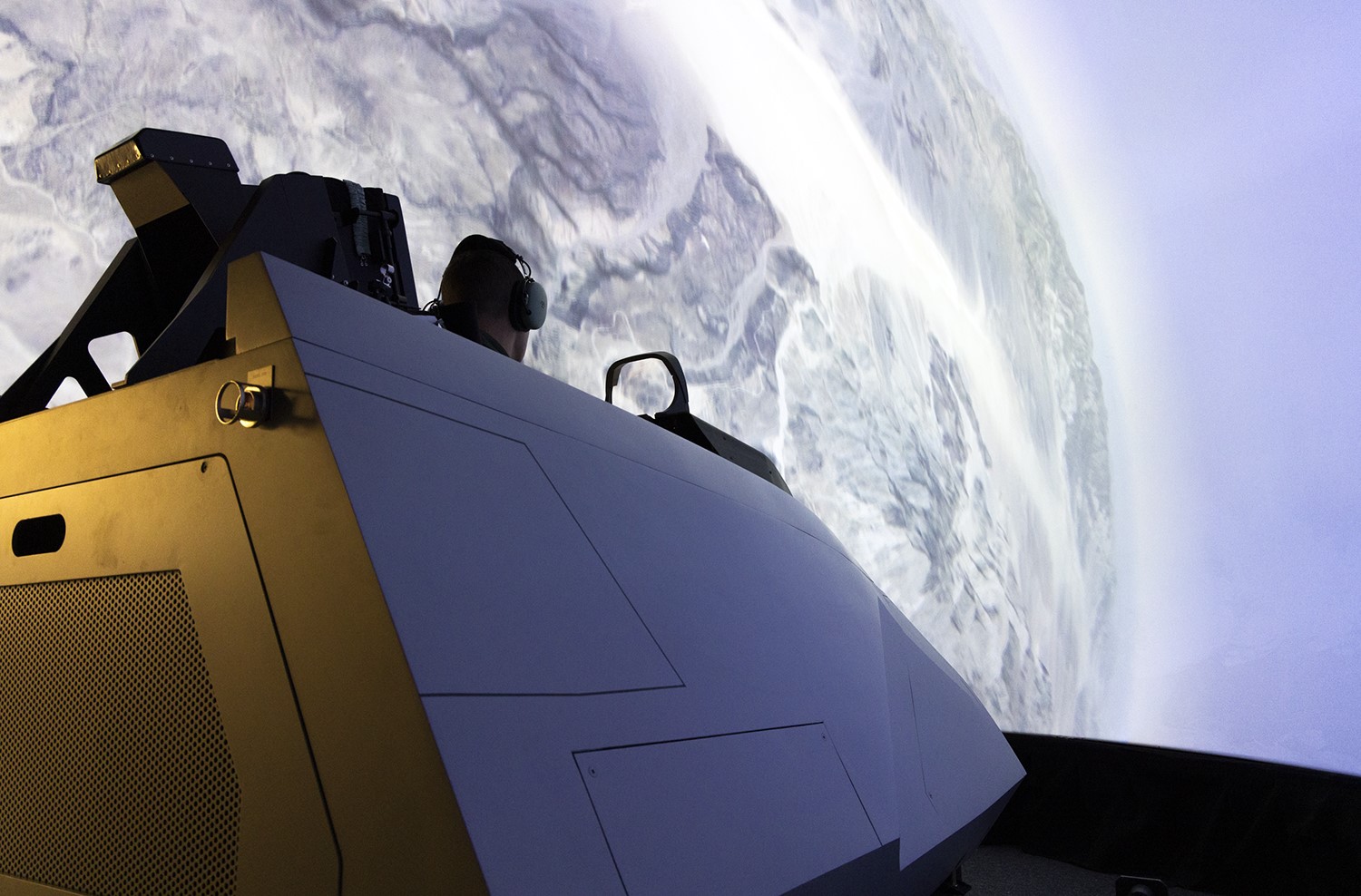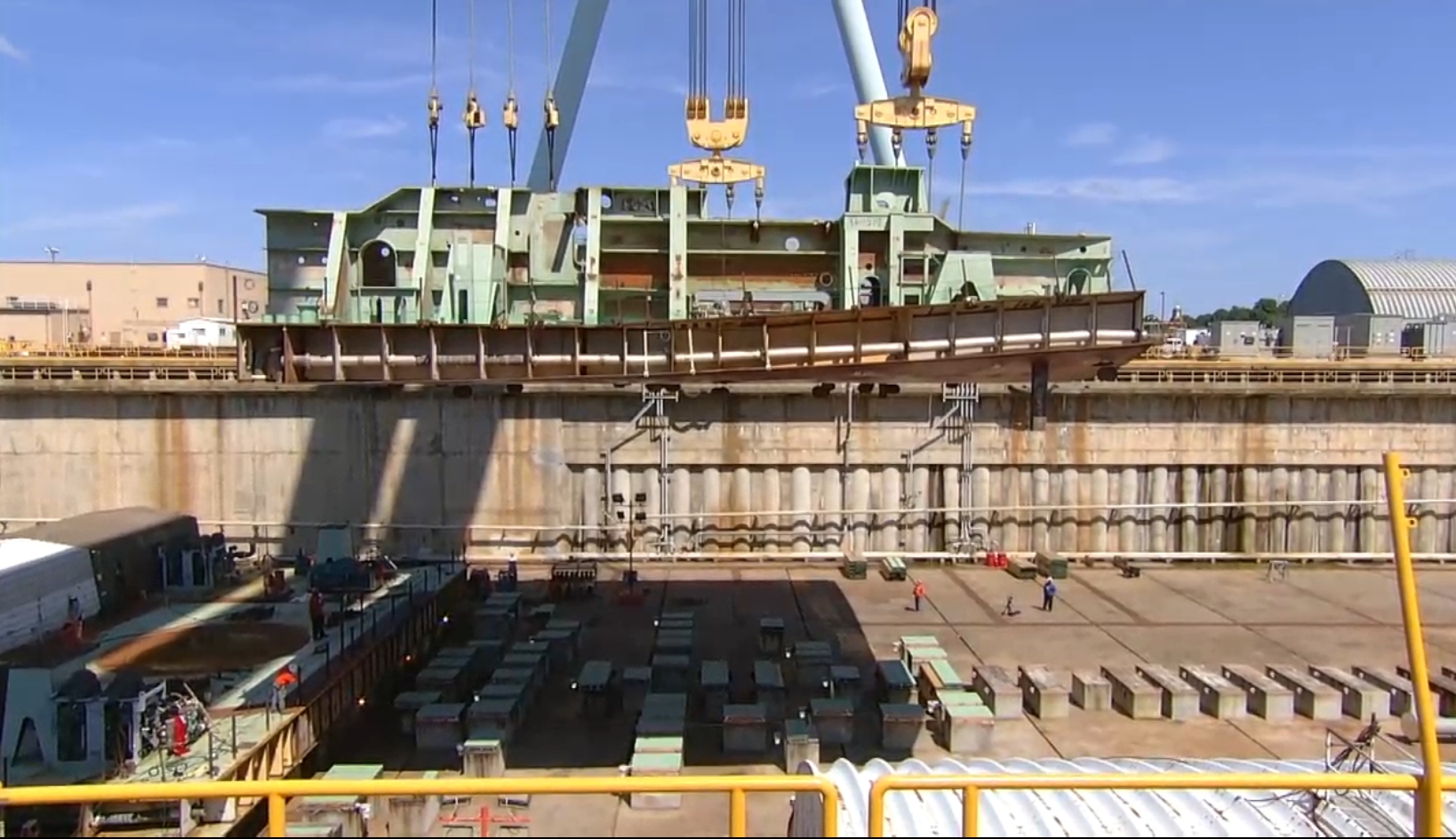
Shipbuilder Huntington Ingalls Industries (HII) laid the keel for the second Ford-class nuclear aircraft carrier — John F. Kennedy (CVN-79) — in a Saturday ceremony at the company’s Newport News, Va. shipyard.
The ceremony marked the symbolic start of construction for the planned 100,000-ton carrier though elements of Kennedy have been built since 2010.
The initials of ship sponsor Caroline Kennedy — the daughter of President John F. Kennedy and current U.S. ambassador to Japan — were welded into a plate on the ship and Kennedy joined the ceremony via video.
“The aircraft carrier came of age in a time of conflict,” Kennedy said.
“It was untested, and the capabilities it brought were questioned. Since those early days, the carrier has come to be recognized as a symbol of peace, strength and freedom.”
The ceremony was also attended by Virginia Gov. Terry McAuliffe, Rep. Randy Forbes (R-Va.), Rep. Bobby Scott (D-Va.), Naval Sea Systems Command commander Vice Adm. William Hilarides Assistant Secretary of the Navy for Research, Development and Acquisition Sean Stackley.
The ceremony for Kennedy comes as Congress — particularly Senate Armed Services Committee chair Sen. John McCain (R-Ariz.) — has continued to ask hard questions into the cost growth of the Ford-class carriers.
The ships feature several news technologies — including General Atomics’ Electromagnetic Aircraft Launch System (EMALS) and Advanced Arresting Gear (AAG) — which promise to increase the amount of aircraft sorties by almost 30 percent with reduced crew compared to the current Nimitz-class CVNs.
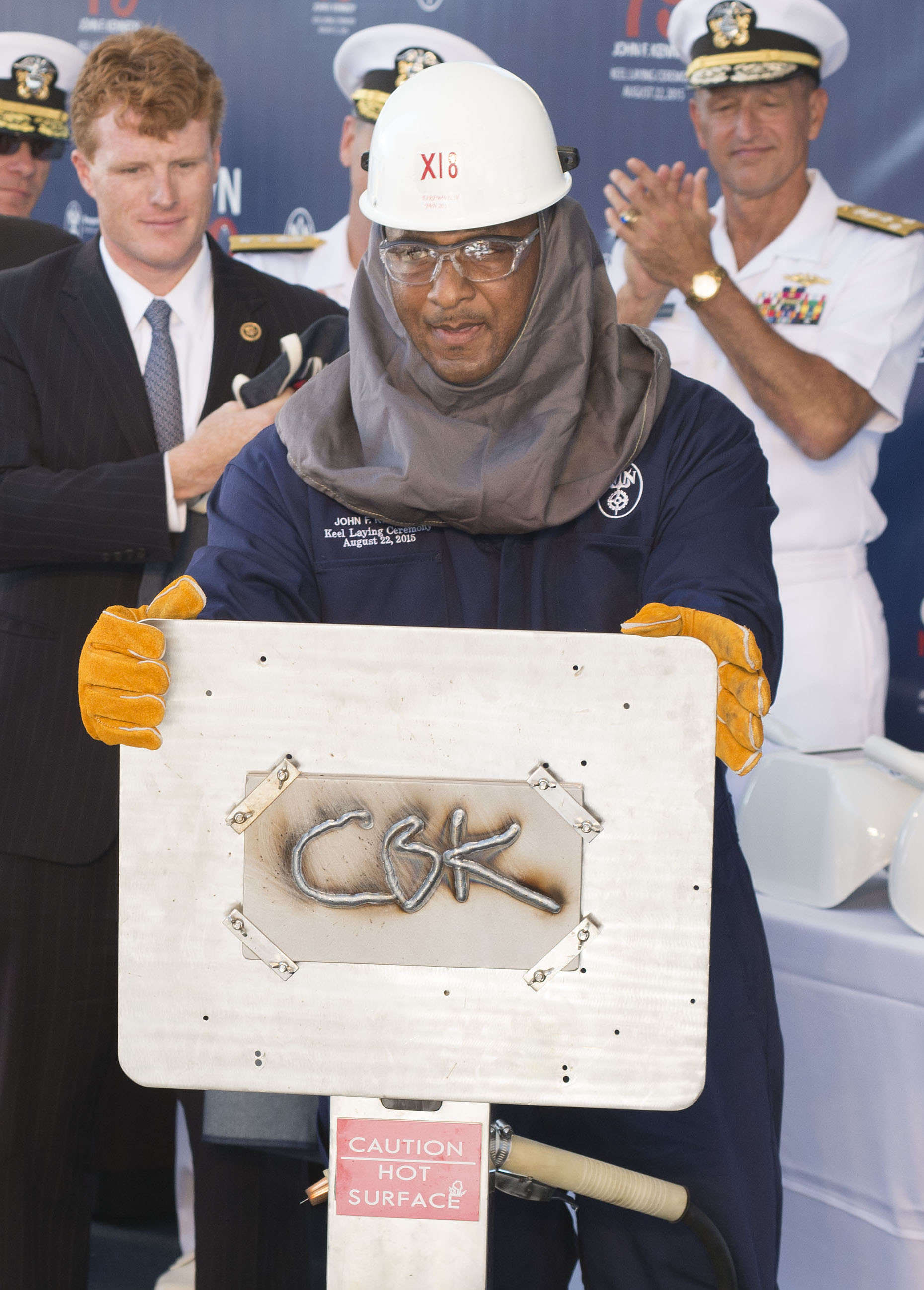
However, additional design and construction work for the first ship — Gerald R. Ford — have added more than $2 billion to the first-in-class ship since 2008 for a total of $13 billion.
The cost estimates for Kennedy have also increased since 2008 to more than $11 billion with Congress and the Navy currently at odds over the the ultimate size of a legislatively mandated cost-cap for the construction of the carrier.
Still, NAVSEA has promised to continue to squeeze out additional cost from carrier construction.
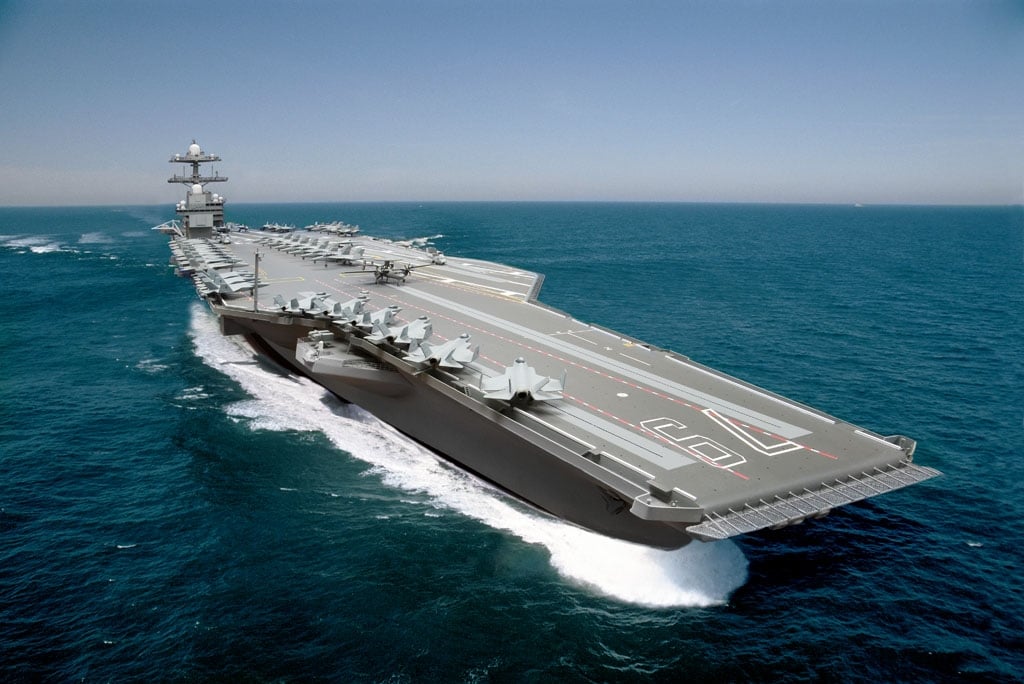
“With a stable design, mature requirements and an improved build process we will reduce construction hours by 18 percent, lower the cost to build the ship by almost $1 billion in real terms compared to CVN-78 and meet the cost cap,” Program Executive Officer (PEO) Carriers Rear Adm. Thomas Moore said in a NAVSEA statement in June.


